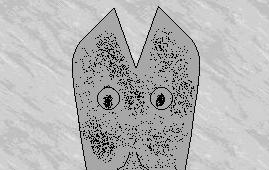Ann Landers’ defection from the Chicago Sun-Times after 31 years hasn’t attracted much interest outside the Windy City. The general feeling, I imagine, was that any barely literate busybody with Victorian values and a knack for reducing people’s deeply felt problems to simple platitudes in a hundred words or less could write an advice column.
Apparently, this was not the case, as the 10,000 applicants for the position found out. (That’s right: 10,000. The odds are that the person sitting next to you at this moment applied for Ann Landers’ job. Scary thought, isn’t it?) What set Ann Landers apart from all the other would-be advisers to the sick, the lovelorn or the just plain weird was the depth of her research.
Research? For an advice column? Wouldn’t an old Smith-Corona and an insatiable appetite for other people’s misery suffice? My mind was boggled, but not nearly so boggled as when I eventually contacted the obliquely named All Data Institute, which supplied research for advice and other columnists.
“It’s not enough for an advice columnist to have an opinion,” Wilberforce N. Testamint, President of All Data, explained in his sumptuous Decatur, Alaska office. “The advice columnist should be able to call upon experts to confirm his or her preconceived points of view. Only then will the columnist’s opinions carry any weight. Much of what we do is simply matching positions with experts who can find facts to support them.
“But, of course, we do our own research, as well. We supplied all of the data for the Toilet Paper Controversy, for instance.”
The Toilet Paper Controversy dates back to at least the creation of the flush toilet, although there is some intriguing – albeit inconclusive – evidence to suggest that it may have begun in outhouses in Ancient Mesopotamia. It didn’t really erupt, however, until the 1950s, when the question of whether to drape the paper on the inside of the roll or the outside became a cause of great social tension. Individuals unfortunate enough to be on the wrong side of the Controversy became outcasts. Families were split. The Controversy seemed to peak in 1974, when the Great Toilet Paper Debate between F. Lee Bailey and betty Crocker at Harvard University ended in acrimonious indecision. It wasn’t until 1986 that Landers pronounced the final word on the subject: outside.
“We started with a random survey of households in the Schenectady area, Schenectady being about as random as you can get. This was followed up with a diary writing survey not unlike the one used by Neilson to measure television audiences, except our questions were filled out in people’s bathrooms. Come to think of it, Neilson diaries are probably filled out there, too. In any case, after six months, our research clearly showed that most people didn’t care how their toilet paper fell.
“Clearly, this was getting us nowhere.”
The next phase of the research involved a review of the literature, according to Testamint. This did not, however, prove to be as easy as it might sound. “There were thousands of articles in magazines like Better Homes and Bathrooms and American Grooming and Toiletries, and hundreds of books by noted anthropologists and obscure hair stylists. Just wading through the material took us several months.
“Unfortunately, it didn’t help. The experts were more or less divided, with only a slight tendency to support an inside interpretation. This was about the time we lost Johnson.”
Elric Johnson, a brilliant researcher at Stanford University and one of the few people on the research team who really enjoyed working with 57 variable equations, apparently went mad during All Data’s Toilet Paper Controversy research. He was found one afternoon applying the business end of a Bunsen burner to his lunch, and, before he as through, half the facility went up in flames. “Bertram’s on holiday!” he repeated for several hours, then lapsed into a coma from which he has never recovered.
An analysis of the physical properties of toilet paper set the All Data research team on the track which would eventually lead them to the correct answer. “Toilet paper comes in a wide variety of types,” Testamint stated. “Our laboratory examinations indicated differences in texture, composition, weight and thickness. This astounded us. ‘Toilet paper is just toilet paper,’ we had always thought. But, it wasn’t until Williams pointed out that some of the samples had patterns on them that the truth finally dawned on us.”
“Daniel Williams? The brilliant English researcher?”
“No. Mark, his eight year-old son. At first, we laughed at the boy; after all, he had never received a grant in his life! But, once we got over our prejudice, the answer was obvious: toilet paper had to be draped on the outside of the roll or else the pattern wouldn’t be visible!
“That was our finding, and that’s what we reported. Of course, the Toilet Paper Controversy was child’s play compared to the Sock Loss Problem…”


